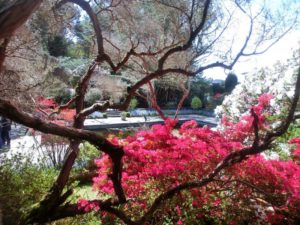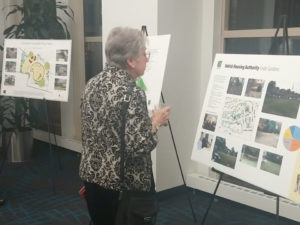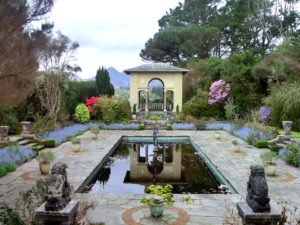ASLA Policy Shaper Interview: Q&A with Nette Compton
Nette Compton, ASLA, is Deputy Director of Parks for People at The Trust for Public Land. Interview was conducted by Aqsa Butt, SITES AP. This article was originally published on August 6, 2018 by the American Society of Landscape Architects (ASLA) in LAND. Republished with permission.
Q: Did you have a preference for public sector versus private work when you were starting your career?
A: I have spent my entire career in the public or nonprofit sector. I have never actually worked for a private landscape architecture firm, which is an anomaly in the profession. When I went for my undergraduate degree I was very passionate about sustainability work, and I saw how cities in a lot of ways were pushing the envelope about policies that were then being implemented on the ground. I was struck by the idea of working exclusively on those types of projects; working for the city would enable me to have a seat at the table with those projects earlier in the process.
Q: Did any events and/or people shape your career decisions?
A: Really good timing. I moved to New York City, and got a job at the Parks Department, where I was doing design and construction of parks and greenways in the Bronx. PlaNYC, a sustainable plan for the city to grow leading up to the year 2030, had just come out under Mayor Michael Bloomberg. I volunteered myself any time there was an opportunity to support the forward-thinking big-picture conversations. Opportunities and passion coincided and led to larger policy conversations. Being in the city with a visionary mayor dedicated to public open space, climate resilience and mitigation, and smart data-driven methods of city management, shaped my career decisions. It was a great time to be in that environment.
In terms of who has influenced my career, it definitely starts with my mom and my grandmother, both avid gardeners and very dedicated naturalists. My dad, too. They all gave me a childhood immersed in nature and an ethic about the importance of nature and protecting it. It initially drove me towards landscape architecture, particularly the environmental performance focus.
Q: What have you found to be significantly different working in the public realm versus nonprofit sector? Has anything surprised you?
A: When you are working in a government position, you have a built-in seat at the table. At the minimum you’re driving what goes in the RFPs and how design work will be evaluated. In the nonprofit world, that seat at the table is not implied. But this also affords you to be more multi-sector and to think about smart solutions that might not neatly fit into an agency. In a lot of ways, it can be more results and outcome-oriented. What is interesting about the nonprofit world is that you have to think creatively about how to work with government systems. You have to think about how nonprofits can bring special skills and expertise in a flexible way to elevate the local community.
Q: Do you feel the public at large draws a distinction between publicly and privately funded and directed projects? Do you see a lot of collaboration between private and public sectors?
A: The public probably doesn’t draw a distinction between funding sources. A lot of well-known large projects rely on both. It often isn’t an either/or proposition. I think well-designed public space, regardless of the underlying owner, if it’s done well, you can’t perceive a distinction. But it gets really messy, very quickly. American urban park systems have become increasingly reliant on nonprofit partners for support, certainly in New York to a large extent. You have nonprofit partners that are charged with helping to improve those spaces but then also need to think about what revenue streams are needed to support them. You may have a public space being closed for a portion of time or event to help fundraise for that work. I think those types of pinch points are more perceived by the public than the underlying ownership or how funding comes together.
I think collaboration between private and public sectors is increasing. There are a number of examples. With Privately Owned Public Spaces (POPS), developers are able to have increased building heights and in exchange they provide the ground level as publicly accessible space.
I think ultimately, we can’t rely on private development to provide parks and programming that are needed by all communities. It is a great solution and a great complement, but it only works in certain places. In many of the neighborhoods where large-scale investment is most needed, civic and government investment driven by need for targeted populations remain crucial.
Q: Which specific factors and regional areas should be considered when making design decisions?
A: A couple of factors. Who lives where? We have to make sure we are investing in open space designed for communities in place and those communities are able to remain in place. Think about programming goals to serve different demographics. Part of this is income, part of it is race. We have a long, complicated history of public space and its design and management, sometimes purposefully or unintentionally excluding certain demographics. Thinking about how to reverse the impacts of infrastructure that reinforces segregation. I think that is the most important work done for open space today. Thinking through how to make a space feel welcoming, making investments with the community and driven by the community, not just for the community.
Q: What is the most important trend with students right now? if there was one tip you wish they would take to heart, what is it?
A: Being multidisciplinary. It is rare for someone to enter the field of landscape architecture without an interest in an intersection or specialty. I would encourage students to remain flexible with what this may be for them and let that evolve. Also, be attuned to what it is that you are uniquely good at. Find that niche role as part of a larger compilation of skill sets that can set you apart.
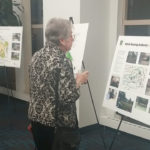 Previous Post
Previous Post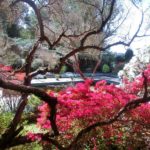 Next Post
Next Post